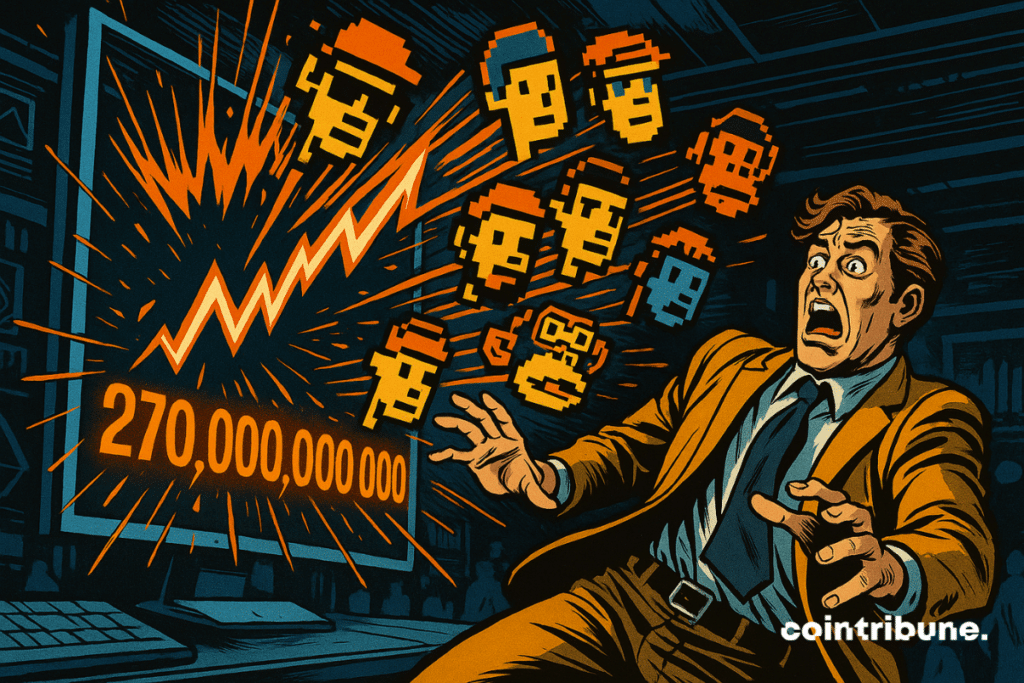DeFi vs NFT Showdown Takes a Wild Turn in 2025 – Who’s Winning Now?
The crypto cage match between DeFi and NFTs just got a plot twist nobody saw coming.
Once rivals, now... frenemies? The lines blur as liquidity migrates.
Yield farmers are aping into JPEGs. NFT whales are stacking governance tokens. The irony? Both sides still pretend they 'don’t care about money' while chasing alpha harder than Wall Street interns during bonus season.
Smart contracts are eating traditional finance. JPEGs are eating smart contracts. Soon we’ll just have self-referential crypto ouroboros – and bankers will still claim it’s 'just a bubble.'

In Brief
- NFTs recorded $530M in July, with an average price doubled to $105.
- DeFi reached a record $270B in total value locked, despite fewer users.
- Brands like Nike and Rolex explore NFTs for authentication and marketing.
- Hacks cost $132M in July, highlighting the ongoing fragility of the Web3 ecosystem.
NFTs Lead the Dance, DeFi Holds the Cash
In July,achieved(TVL), a historic record. But this financial triumph masks an unexpected reality: in terms of users,interacted with NFT dapps, slightly more than DeFi, out of a total 22 million.

The explanation partly lies in thecapturing up to, attracting professional traders and loan enthusiasts through its Blend protocol., on the other hand, remains the leader in daily active users (27,000 traders) thanks to a multichain and diversified offering. Zora attracts creators with a low-cost mint via its LAYER 2 solution and its $ZORA token.
As DappRadar notes:
NFT trading volumes surged by 96%, propelling the sector ahead of DeFi in user numbers.
NFT: From Speculative Boom to the Era of Utility
July figures speak:, but -4% in transactions. Result: an average price doubled, rising from $52 to $105.
, like CryptoPunks (+25% in one month), drive this rebound: 9 of the 10 biggest NFT sales in 24 hours were Punks. Brands are not staying behind. Nike teams with EA Sports to launch VIRTUAL sneakers,, while Coca-Cola China tests digital collectibles.

Use cases are expanding: digital identity, event ticketing, gaming, tokenization of real assets. According to DappRadar:
NFTs are evolving from a simple trend to utility, shifting from collectibles and culture to identity, ticketing, gaming, and tokenization of real assets.
This shift towards utility marks a: fewer impulse buys, more integration into digital services.
A Web3 in Permanent Recomposition
In the crypto ecosystem, thechanges fast. In July, gaming represented 22.4% of dapp activity, ahead of AI (18.7%) and NFTs (17.5%). DeFi, although declining in users, remains essential for capital: ETH surged 60% in a month – Ethereum’s crypto recently crossed the $4,000 mark -, and staking rewards reached 29.4% APY.
BTCUSDT chart by TradingViewOn Solana,, managing 60% of daily perpetual volume and $5.1 billion bridged in USDC. But not everything is rosy: exploits and hacks cost $132 million in July, a +16% increase from June.
Figures that redraw the Web3 ecosystem:
- $270B: DeFi TVL record as of July 28;
- $530M: NFT volume in July, +96% month-over-month;
- 3.85M: daily active wallets on NFT dapps;
- $132M: losses due to exploits in July.
Facing this picture, regulation advances: in the United States, the GENIUS Act and the CLARITY Act pave the way for smoother integration between decentralized and traditional finance. “Project Crypto”, presented by the SEC, even plans specific standards for DeFi.
NFTs are no longer just a trend: they are establishing themselves as a lever for transformation in the crypto universe. By diversifying their uses, they are creating new bridges between digital assets and traditional markets. A dynamic that could, in the long term, profoundly change how exchanges and trading are organized in Web3.
Maximize your Cointribune experience with our "Read to Earn" program! For every article you read, earn points and access exclusive rewards. Sign up now and start earning benefits.

